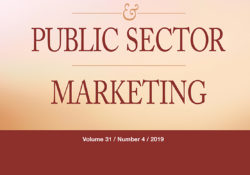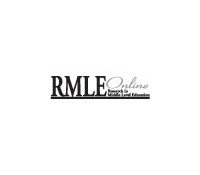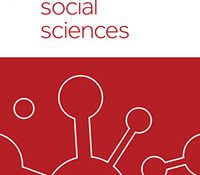eric.ed.gov har udgivet: MATHCO is a motivating series of audiovisual and print materials designed to overcome the negative effects of sex bias and stereotyping on the attitudes, interests, and aspirations of girls toward mathematics and mathematics-related careers. The materials teach mathematics skills, demonstrate relationships between mathematics and other subjects, and provide exposure to mathematics-related careers. They are useful for boys as well as girls at the pre- and early-adolescent stage; they are both multiethnic and nonsexist in text and illustrations. Module 2 focuses on patterns, sequences, and equations in language and fine arts as well as in mathematics. The audiovisual script is included, followed by suggested activities and activity work. (MNS) Link til kilde
Like this:
Like Loading...
tandfonline.com har udgivet en rapport under søgningen “Teacher Education Mathematics”: ABSTRACT ABSTRACT The intersection of arts education and special education as a field has been described as lacking in unity, partly because the practices of its different stakeholders are embedded in either special education or arts education. This paper investigates how principals prioritise teachers’ qualifications when organising arts education in compulsory school for pupils with intellectual disabilities (CSID) in Sweden, what they perceive the value of arts education in CSID to be and how they organise arts education in relation to cooperation between pupils from CSID and compulsory regular school (CRS). These questions were investigated using a questionnaire, which was answered by 124 principals. The results show that around three times as many principals prioritised specialised arts knowledge over competence… Continue Reading →
Like this:
Like Loading...
eric.ed.gov har udgivet: The results of the SAT 9 tests administered to Guam students in grades 1, 3, 5, 7, 9, 10, and 11 have consistently indicated below average academic performance in the subjects of reading, math and language arts over the past decade of testing. To ensure that students attain the necessary skills and knowledge in reading, math, and language arts, the Student Focus Committee has constructed a district action plan designed to address problems by focusing on measurable objectives to raise student performance. These objectives, discussed in detail in the plan, are grouped into the following categories: (1) standards and assessment; (2) personnel quality and accountability; (3) federal, state, and local programs; (4) home-school connection; (5) Education Indicator System; and (6) system-wide needs/changes. Appended are the following: (1)… Continue Reading →
Like this:
Like Loading...
tandfonline.com har udgivet en rapport under søgningen “Teacher Education Mathematics”: Abstract Abstract Building on previous studies of ESL and content teachers’ collaboration, this qualitative case study relied on Davies and Harré’s positioning theory as a theoretical lens to examine the influences that collaboration between an ESL teacher and a language arts teacher had on the language arts teacher’s approach to planning for and teaching ESL students. Data collection included three audio recorded semi-structured interviews, two video recorded collaborative planning sessions, two reflective journals written by the language arts teacher, document analysis of the created lesson plan documents, and field notes. The findings showed that the language arts teacher changed her perceptions about the content teacher’s role, lesson plan design, and her views about ESL students while working in collaboration with… Continue Reading →
Like this:
Like Loading...
eric.ed.gov har udgivet: This paper presents results of a study that sought to answer the question, “How does integrating dance and math in an intense co-teaching model of integration affect student attitudes toward learning math?” The goal of the dance/math project was to engage students in math in ways that reached students’ multiple intelligences and encouraged them to make complex connections and try new problem solving techniques. The classroom teachers who designed and implemented the project hypothesized that students who worked with a dancer once a week to learn math concepts would become more engaged in mathematics and have more successful and positive experiences with mathematics than students who did not work with a dancer. Overall there was a significant difference between the dance/math students’ and the non-dance/math students’ attitudes… Continue Reading →
Like this:
Like Loading...
eric.ed.gov har udgivet: This article addresses the need for research in the areas of Grade R curriculum and pedagogy, Grade R teacher professional development, and early years mathematics teaching. More specifically, it responds to the need for teacher professional development in Grade R mathematics teaching of the geometric concepts of space and shape. The article describes a study about teachers’ understanding of how visual arts can be used as pedagogical modality. The study was prompted by the findings of a ‘Maths and Science through Arts and Culture Curriculum’ intervention undertaken with Grade R teachers enrolled for a Bachelor of Education (Foundation Phase) degree at a South African university. Post-intervention, teachers’ classroom practices did not change, and they were not using visual arts to teach mathematical concepts. The lessons learned from… Continue Reading →
Like this:
Like Loading...
tandfonline.com har udgivet en rapport under søgningen “Teacher Education Mathematics”: Abstract Abstract There is growing recognition of the benefits of creative experiences and activities in social and health care. This article focuses on social services clients’ experiences of creativity and arts in their lives. Ten social services clients were interviewed about their experiences in relation to creativity or creative activities. These interviews were analysed by employing the existential-phenomenological approach. As a key finding of this research, we present a conceptualisation of how creativity enhances the reconstruction of the life narrative. The findings reveal four key aspects of how creativity is perceived and experienced as part of life, what kinds of meanings these experiences carry and what their significance is in people’s lives. These are: (1) constructing coherence, (2) fostering feelings… Continue Reading →
Like this:
Like Loading...
eric.ed.gov har udgivet: This paper examines and reports on beginning generalist teacher self-efficacy, which Bandura (1997) suggests plays an important part in student outcomes. In 2008, 201 beginning generalist teachers throughout the state of Queensland, Australia, participated in a study that aimed to provide a snapshot of current perceptions towards support in schools for the arts. Beginning teachers were asked to rank their school support for a number of different subjects in the school curriculum and provide written justification for these rankings. Results suggest that beginning teachers perceived a general lack of support for the teaching of the arts in their classroom, compared to English and maths. They reported that schools provided greater financial support, assistance and professional development for the teaching of literacy and numeracy with a view to… Continue Reading →
Like this:
Like Loading...
eric.ed.gov har udgivet: In an effort to identify and incorporate exemplary practices into existing and future afterschool programs, the U.S. Department of Education commissioned a large-scale evaluation of the 21st Century Community Learning Center (CCLC) program. The purpose of this evaluation project was to develop resources and professional development that addresses issues relating to the establishment and sustainability of afterschool programs. Fifty-three high functioning programs representative across eight regional divisions of the nation, including rural and urban programs, community-based and school district related programs, were identified using rigorous methods. Exemplary practices in program organization, program structure, and especially in content delivery were studied. The findings were synthesized into the Afterschool Toolkit that was made available to programs nationwide via the world-wide-web. Professional development was conducted consistently and extensively throughout the… Continue Reading →
Like this:
Like Loading...

tandfonline.com har udgivet en rapport under søgningen “Teacher Education Mathematics”: ABSTRACT ABSTRACT This paper identifies the distinctive features of nonprofit arts sponsorship relative to profit driven sports sponsorship and shows that although arts sponsorship has been little researched, it is a potentially important means of marketing. The methodology employed was a literature review on sponsorship that attempted to distinguish arts sponsorship from sports sponsorship. Then, we present the findings from 23 in-depth interviews with arts sponsee managers, to reveal how they see themselves (as sponsees) being differentiated from sports sponsees. The literature and interview findings are brought together in a discussion that highlights the differences between arts sponsorship and sports sponsorship in terms of target audience, the relationship cost/benefit, range of emotions elicited, awareness, marketing metrics, goodwill, and learning potential.… Continue Reading →
Like this:
Like Loading...



